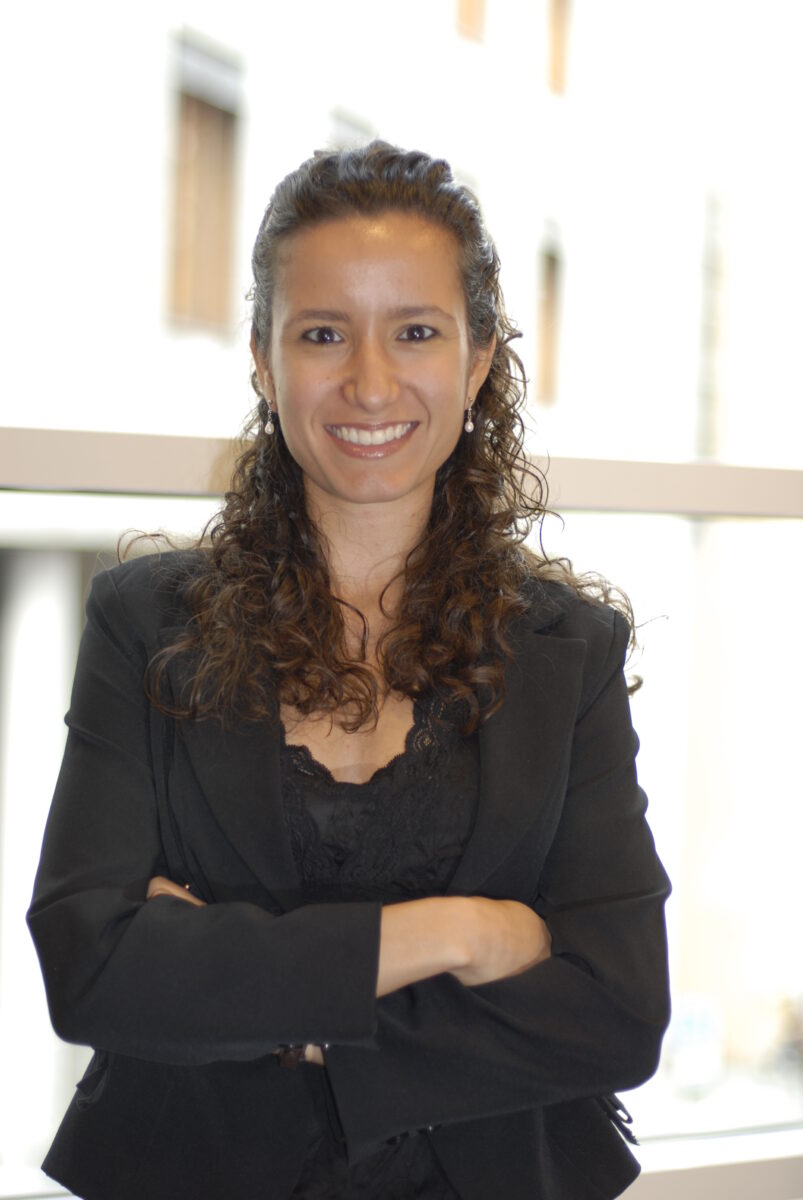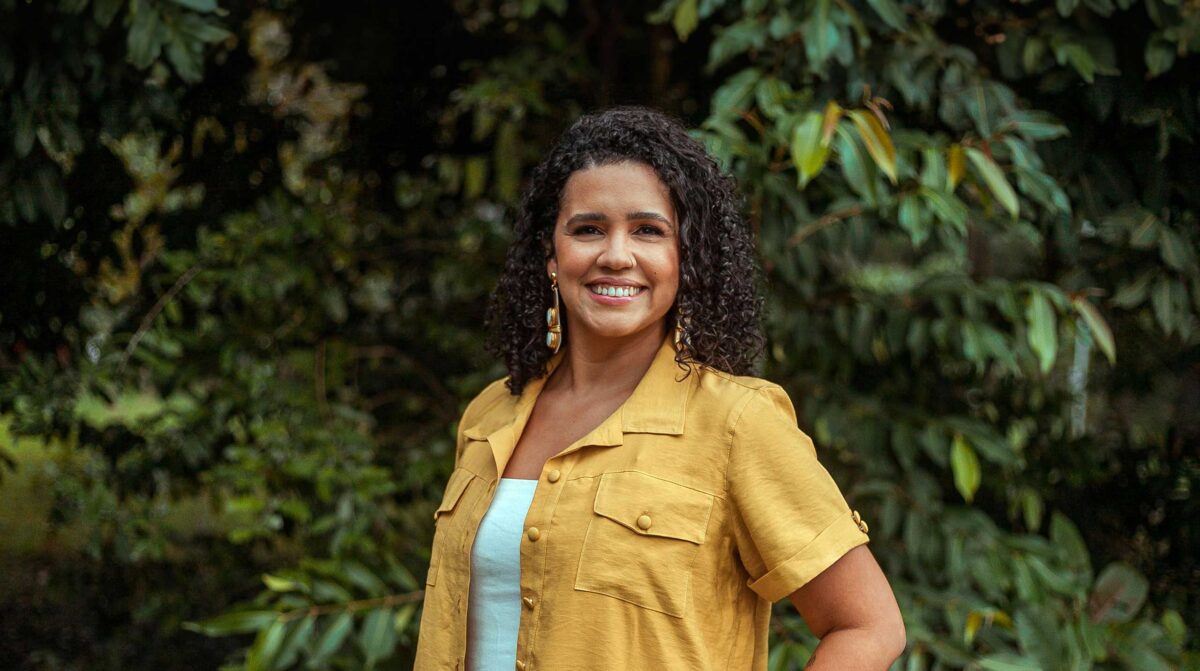 #Interviews
#Interviews
Gender equity in patents needs to improve
Female representation in patent applications is growing at a slower pace than in the publication of scientific articles, says Elsevier’s Fernanda Gusmão
 Patents for which all named inventors are women have been relatively stable over the last 15 years at between 3% and 6%, according to a report by Agência Bori and Elsevier | Image: Shutterstock
Patents for which all named inventors are women have been relatively stable over the last 15 years at between 3% and 6%, according to a report by Agência Bori and Elsevier | Image: Shutterstock
Between 2002 and 2022, the percentage of scientific articles published by women in Brazil increased by 29%, jumping from 38% to 49% in the period. The data are from the report Em direção à equidade de gênero na pesquisa no Brasil (Towards gender equity in research in Brazil), released in March by Brazilian science news platform Agência Bori and Dutch publisher Elsevier.
From a list of 18 countries and the European Union, Brazil currently places third for female representation in science, behind only Argentina and Portugal—both with 52% of scientific articles authored by women.
The report showed that female representation over the past two decades exceeded 60% in fields such as nursing (80%), pharmacology, toxicology, and pharmaceuticals (62%), and psychology (61%). However, it fell below 30% in areas such as mathematics (19%), computer science (21%), and engineering (24%).
One important data point, highlight the authors, was a drop to 36% in the percentage of women among more experienced scientists.
In an interview with Science Arena, Fernanda Gusmão, Elsevier’s Head of Research Solutions for Latin America, talked about the data and explained that when it comes to patents, gender equality is moving at a slower pace. The percentage of patents for which all named inventors were women has remained stable over the last 15 years, at just 3–6%.
The same is not true of patents with both male and female inventors, which have grown from 24% in 2008 to 33% in 2022.
Science Arena – What prompted Elsevier and Agência Bori to join up for this project?
Fernanda Gusmão – The partnership between Elsevier and Bori began in 2023, with the aim of boosting Bori’s mission to spread scientific knowledge. We have already published other reports on various topics. One of them, which had a significant impact, was about the drop in scientific output in Brazil between 2021 and 2022. The idea is to periodically publish reports that provide new information and insightsabout research in Brazil.
What methodology was adopted to identify and outline the distribution of scientific papers published by author gender, with statistical significance?
The report on gender diversity in research is part of a larger Elsevier initiative on diversity in research. Gender diversity is just one of the aspects analyzed. In the methodology adopted for this report, Elsevier partnered with a company that created a tool capable of analyzing author names and determining whether they are masculine or feminine. There are some limitations to the approach. One is that it only recognizes binary genders. Despite this, the data is useful to the discussion of diversity within science.
Were you able to identify the biggest factors behind this 11 percentage point increase in female representation over the two decades?
That wasn’t addressed by this report. It was more of a numerical analysis. However, it is evident that the increase in female participation in science is a reflection of the increase in female participation in various other areas. Women have really broken down professional barriers in the last 20 years.
Today, they are CEOs and presidents. Science has followed the same path. It is a process toward women feeling truly empowered, pursuing their dreams, and not being afraid to compete for leadership roles and prominent positions.

Although almost half of all article authorsare women, this figure drops to 36% among more experienced scientists, which is much lower than among women at the beginning of their careers. Is this because women are overloaded with so much additional work—after having children, for example?
The numbers reflect exactly that. As women progress in their careers, they begin to take on additional roles, which affects their academic career. The issue of motherhood is a very common challenge cited by female researchers.
Female grant recipients, for example, have to deliver their projects within the same timeframes as male grant recipients. But they might have a child during this period. As a result, many women have less time to write their proposal and do their research.
What were the main things you observed when analyzing female representation in different fields?
We found that there are more women in fields of knowledge related to the life sciences. The percentage surpassed 60% in some of these disciplines. Women are less represented in fields such as mathematics, engineering, and physics. So there is a discrepancy between female and male representation, but we noticed that in fields with lower female participation, such as physics, engineering, and mathematics, there has been significant growth in recent years.
Is there also a lack of equality in the percentage of women as lead authors, research group leaders, and patent applicants?
We analyzed patents and observed that female representation among patent inventors remains very low. It was low in the past and it is still low now, in the range of roughly 3% to 6%. After examining this issue of patents in a little more depth, one of the things we noticed is that research project leaders are usually men, so they more frequently end up being named as inventors on patents.
One of the obstacles we identified that might be holding back female inventors and patent owners is that the research groups that file patent applications are usually led by men.
Are there any parallels between what you observed in Brazil and what happens in other countries? Where do we stand and what examples could inspire the country to improve gender equity in science?
From a list of 18 countries and the European Union, Brazil has the third-highest number of female authors, behind only Argentina and Portugal. What we realized is that in other countries, there is also a predominance of women in the social sciences and medical fields. In “more complex” sciences, such as science and mathematics, the proportion of women tends to be slightly lower. This is true in many countries.
This is a very new topic, which most of the research world only started looking at very recently. We weren’t able to identify any specific policy or guidelines in these countries to increase female representation in science. I think this is a phenomenon that has been gathering pace worldwide—women are taking their place in various arenas and science is another reflection of this.
The good news is that some universities are granting more time to female grant recipients. Among the policies we looked at, there is a working group established by Brazil’s Ministry of Education at the beginning of the year to evaluate the possibility of creating a national policy to help mothers remain in higher education institutions.
What did the study reveal about whether Brazilian science is meeting the Sustainable Development Goals (SDGs) proposed by the United Nations (UN) in 2015?
One interesting aspect that the research brought up is the issue of female representation in articles related to the SDGs. For almost all SDGs, scientific papers were in what we call the parity zone, with women accounting for between 40% and 60% of authors. The only exceptions were SDG 7 (affordable and clean energy) and SDG 9 (industry, innovation, and infrastructure). Although these two goals were not in the parity zone, female representation has grown significantly in recent years.
*
This article may be republished online under the CC-BY-NC-ND Creative Commons license.
The text must not be edited and the author(s) and source (Science Arena) must be credited.


